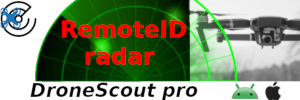Would a drone fixed to a zipline or other such stationary point be subject to the same rules as an untethered drone? A simple yes or no is the preferred answer.
You are using an out of date browser. It may not display this or other websites correctly.
You should upgrade or use an alternative browser.
You should upgrade or use an alternative browser.
Legality of tethered or otherwise attached drone.
- Thread starter thispilothere
- Start date
Experimentalkase
Member
Tethered drones using powered flight do not fall under the category of balloons and kites according the the FAA.Would a drone fixed to a zipline or other such stationary point be subject to the same rules as moored balloons and kites?
- Joined
- Nov 12, 2019
- Messages
- 890
- Reactions
- 1,074
- Age
- 67
I'm always nervous about documents without a date, name of the issuer, or contact information.
Here's §44806, Public unmanned aircraft systems, of the U.S. Code from the U. S. House of Representatives. Note that the title is different and the contents are different from the linked document. I'd rely on the House version.
EDIT - ADDED MISSING URL
Does anyone know what a "public" means in "Public actively tethered unmanned aircraft systems? This section seems to focus on public agencies. Is this applicable only to drones operated by public agencies?
(I'm still wondering about the "why?" of attaching a drone to a zipline.)
Last edited:
BethanyFerrell
Well-Known Member
I've not read the documents, but wonder about the term "actively tethered" — whether it means a tether that conducts electricity so the aircraft need not loft a heavy battery. Might be relevant, might not.
"actively tethered" means the tether is supplying the power. If the tether breaks, the drone falls.I've not read the documents, but wonder about the term "actively tethered" — whether it means a tether that conducts electricity so the aircraft need not loft a heavy battery. Might be relevant, might not.
BethanyFerrell
Well-Known Member
Experimentalkase
Member
§44801 (7) The term "public unmanned aircraft system" means an unmanned aircraft system that meets the qualifications and conditions required for operation of a public aircraft.Does anyone know what a "public" means in "Public actively tethered unmanned aircraft systems? This section seems to focus on public agencies. Is this applicable only to drones operated by public agencies?
49 USC Ch. 448: UNMANNED AIRCRAFT SYSTEMS
uscode.house.gov
Last edited:
Experimentalkase
Member
§44801 (1) ... The term "actively tethered unmanned aircraft system" means an unmanned aircraft system in which the unmanned aircraft component—Thanks, the "actively" sounded significant but I wasn't sure of the exact meaning.
(A) weighs 4.4 pounds or less, including payload but not including the tether;
(B) is physically attached to a ground station with a taut, appropriately load-rated tether that provides continuous power to the unmanned aircraft and is unlikely to be separated from the unmanned aircraft; and
(C) is controlled and retrieved by such ground station through physical manipulation of the tether.
49 USC Ch. 448: UNMANNED AIRCRAFT SYSTEMS
uscode.house.gov
Last edited:
Experimentalkase
Member
I've been unable to find any reference to 'passively' tethered drones, i.e., simply fixed to a stationary point. §44806 refers to Public Actively Tethered UAS, and the rules seem similar to untethered drones, with some differences.
@Vic Moss I respect and admire your knowledge and experience. Please help me understand why a tethered drone would be considered "not flying" in the NAS.
Excerpt from §44806:
(T)he Federal Aviation Administration shall permit the use of, and may issue guidance regarding, the use of public actively tethered unmanned aircraft systems that are-
(A) operated at an altitude of less than 150 feet above ground level;
(B) operated-
(i) within class G airspace; or
(ii) at or below the ceiling depicted on the Federal Aviation Administration's published UAS facility maps for class B, C, D, or E surface area airspace;
(C) not flown directly over non-participating persons;
(D) operated within visual line of sight of the operator; and
(E) operated in a manner that does not interfere with and gives way to any other aircraft.
49 USC Ch. 448: UNMANNED AIRCRAFT SYSTEMS
uscode.house.gov
FAA Reauthorization Act of 2018.
govinfo.gov
@Vic Moss I respect and admire your knowledge and experience. Please help me understand why a tethered drone would be considered "not flying" in the NAS.
Excerpt from §44806:
(T)he Federal Aviation Administration shall permit the use of, and may issue guidance regarding, the use of public actively tethered unmanned aircraft systems that are-
(A) operated at an altitude of less than 150 feet above ground level;
(B) operated-
(i) within class G airspace; or
(ii) at or below the ceiling depicted on the Federal Aviation Administration's published UAS facility maps for class B, C, D, or E surface area airspace;
(C) not flown directly over non-participating persons;
(D) operated within visual line of sight of the operator; and
(E) operated in a manner that does not interfere with and gives way to any other aircraft.
49 USC Ch. 448: UNMANNED AIRCRAFT SYSTEMS
uscode.house.gov
FAA Reauthorization Act of 2018.
govinfo.gov
I did see that. And it immediately raises the question, "What is a public aircraft."§44801 (7) The term "public unmanned aircraft system" means an unmanned aircraft system that meets the qualifications and conditions required for operation of a public aircraft.
49 USC Ch. 448: UNMANNED AIRCRAFT SYSTEMS
uscode.house.gov
My understanding is that they're referring to aircraft and SUASs operated by public agencies, such as fire departments and such.
Experimentalkase
Member
I did see that. And it immediately raises the question, "What is a public aircraft."
My understanding is that they're referring to aircraft and SUASs operated by public agencies, such as fire departments and such.
Excerpt from Title 49 of the United States Code (49 U.S.C.) § 40102, Definitions:
(41) “public aircraft” means any of the following:
(A) Except with respect to an aircraft described in subparagraph (E), an aircraft used only for the United States Government, except as provided in section 40125(b).
(B) An aircraft owned by the Government and operated by any person for purposes related to crew training, equipment development, or demonstration, except as provided in section 40125(b).
(C) An aircraft owned and operated by the government of a State, the District of Columbia, or a territory or possession of the United States or a political subdivision of one of these governments, except as provided in section 40125(b).
(D) An aircraft exclusively leased for at least 90 continuous days by the government of a State, the District of Columbia, or a territory or possession of the United States or a political subdivision of one of these governments, except as provided in section 40125(b).
(E) An aircraft owned or operated by the armed forces or chartered to provide transportation or other commercial air service to the armed forces under the conditions specified by section 40125(c). In the preceding sentence, the term “other commercial air service” means an aircraft operation that (i) is within the United States territorial airspace; (ii) the Administrator of the Federal Aviation Administration determines is available for compensation or hire to the public, and (iii) must comply with all applicable civil aircraft rules under title 14, Code of Federal Regulations.
Similar threads
- Replies
- 8
- Views
- 786
- Replies
- 6
- Views
- 1K
- Replies
- 6
- Views
- 3K
- Replies
- 7
- Views
- 1K
DJI Drone Deals
New Threads
-
Hiring Remote Drone Pilots and Support Staff with CrewBloom
- Started by felixleo
- Replies: 1
-
3 Along the road to my daughters former school
- Started by alex_markov
- Replies: 0
-
Last Week's Most Popular Topics (December 13, 2025)
- Started by msinger
- Replies: 0
-










